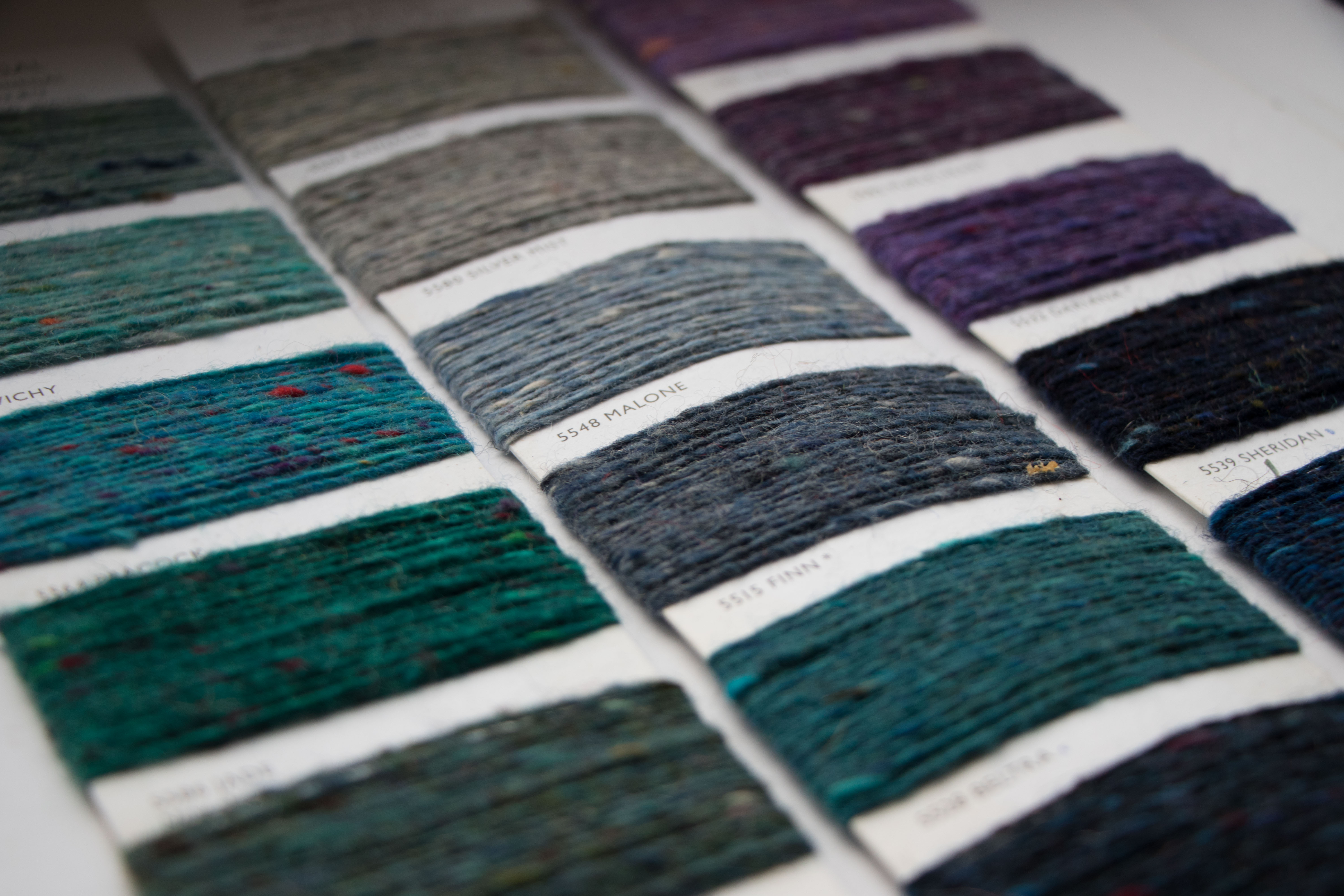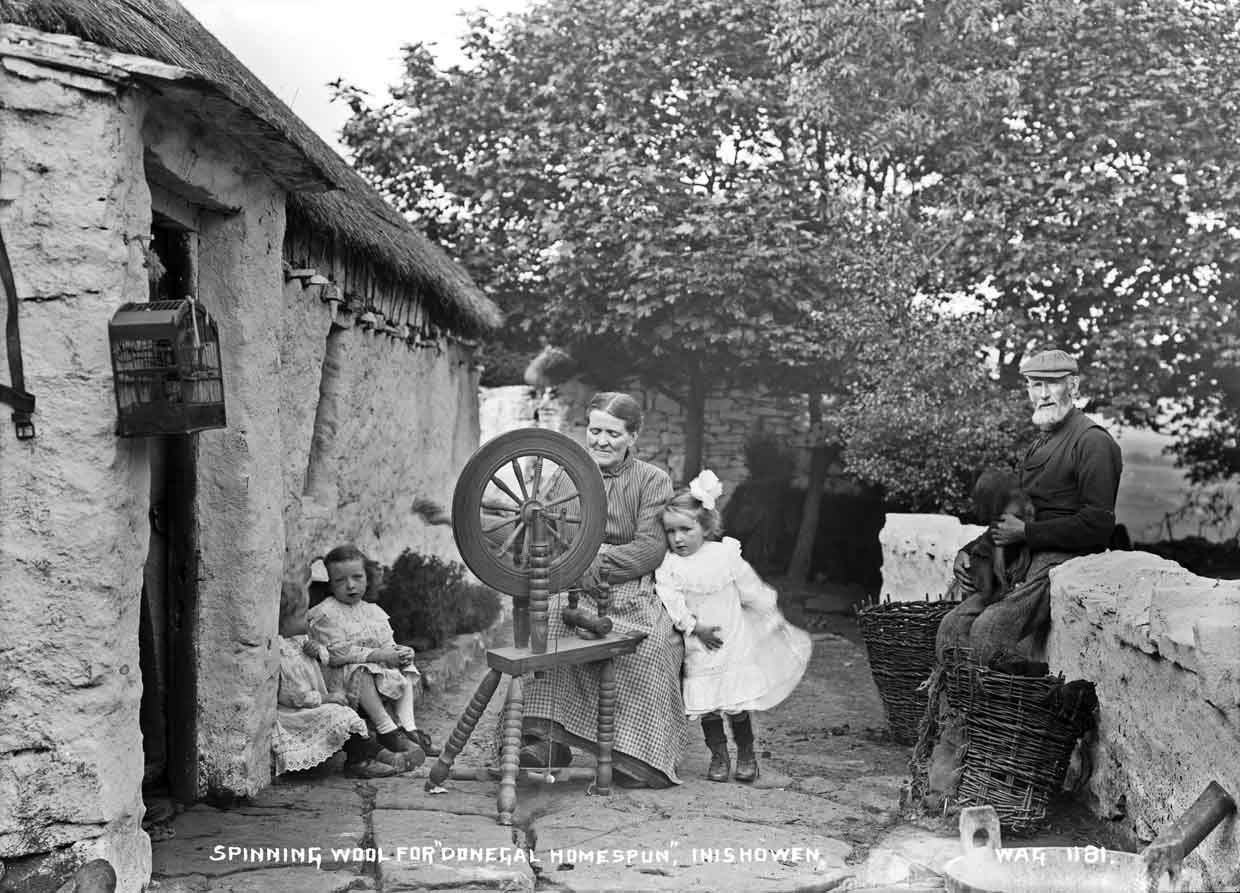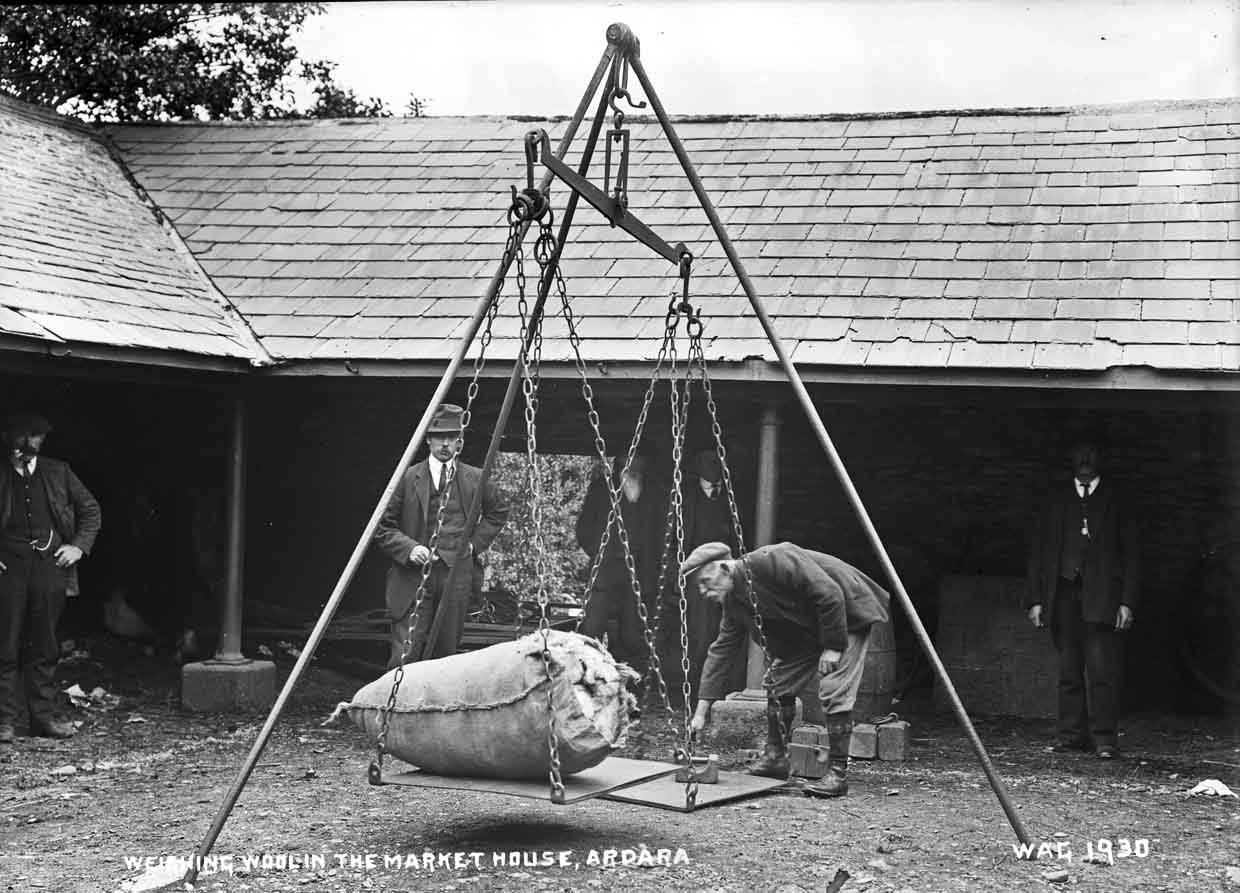Spotlight On: Donegal Tweed
Posted by S. Bookster on 25th Oct 2024
As the name might suggest, Donegal tweed hails from Donegal in Ireland, a fabric that’s woven into the very heart of the county, reflecting the history of the region and the lives of the people who have called it home since prehistoric times.
That’s as far back as we must travel to discover the origins of this beautifully woven cloth, when our ancestors used simple wooden looms to make what they needed for survival, with the robust nature of the resulting cloth providing much-required insulation and wind resistance against the wild Irish weather.
Come the Bronze Age, this simplistic form of weaving had been transformed into a serious craft, with all sorts of interesting patterns and designs featured in the fabric to depict personal stories and cultural traditions.

Inspired by nature
The colours of the yarns reflect the patina of the local countryside, with beautiful purples, greens, blues, greys, browns, and oranges some of the cloth’s defining characteristics.
Similarly, the patterns themselves are also a reflection of the local landscape. One of the most enduring popular looks, even today, is herringbone, a true classic with its roots traced back to the coastal environs and inspired by herring fish caught in the Atlantic by weavers and fishermen over the centuries.
And then there’s the famous Donegal nep, another hugely distinctive characteristic that makes the tweed stand out from the crowd; small flecks of coloured yarn that are incorporated into the wool as it’s spun to lend the tweed its unique aesthetic.
Leading lights
The fine tradition of spinning, weaving and knitting is well documented, going back as early as the 1800s in cottages of south-west Donegal. Here, the locals would use both native and imported wool, dyeing and spinning the fibres into thread before knitting it up into beautiful woollen garments or selling it on to weavers in the area, who would make it into tweed cloth.
While these garments were predominantly intended for personal use, they were also sold on to other local communities - and sometimes even further afield! By the 1900s, a carpet factory in Kilcar had been set up, which drove up the demand for woollen yarn and necessitated the establishment of a new commercial spinning facility.
This ensured that Donegal yarn could be produced at an industrial scale, allowing specialist weavers to make cloth for tailors who could then turn it into tweed coats, suits and jackets. The Donegal Yarns facility is still in operation today and the range of textures and colours produced is impressive, to say the least!


One of the most well-known names in the Donegal tweed world is Magee Weaving, which first started off life as an unassuming draper’s shop in Donegal town, set up by local trader John Magee in 1866, specialising in the handwoven cloth that he sourced from weavers in the area.
By the 20th century, the little shop had expanded and moved into manufacturing, recognising just how unique the fabric was and what broad appeal it had.
Another household name to make note of, however, is Molloy Weaving, a sixth-generation family of weavers who produce authentic Donegal tweed.
Founder Edward Molloy first took up weaving back in the 19th century and the family has been serving the textile industry well ever since, showcasing exceptional craftsmanship and continuing to take inspiration from the natural world for tweed production.
All of Molloy’s yarns are spun and dyed in the local area, with colour matching, designing, warping and weaving all done in house.
Bookster proudly stocks both Molloy and Magee Donegals for our custom tailored menswear products, helping you to look stylish, no matter what the weather’s doing.
We tailor everything from bespoke jackets and blazers to suits, trousers, breeks, waistcoats, gilets and overcoats, all created individually to your own requirements. If you’d like to find out more, get in touch with the team today and we would be happy to help.
 British Pounds
British Pounds
 US Dollar
US Dollar

